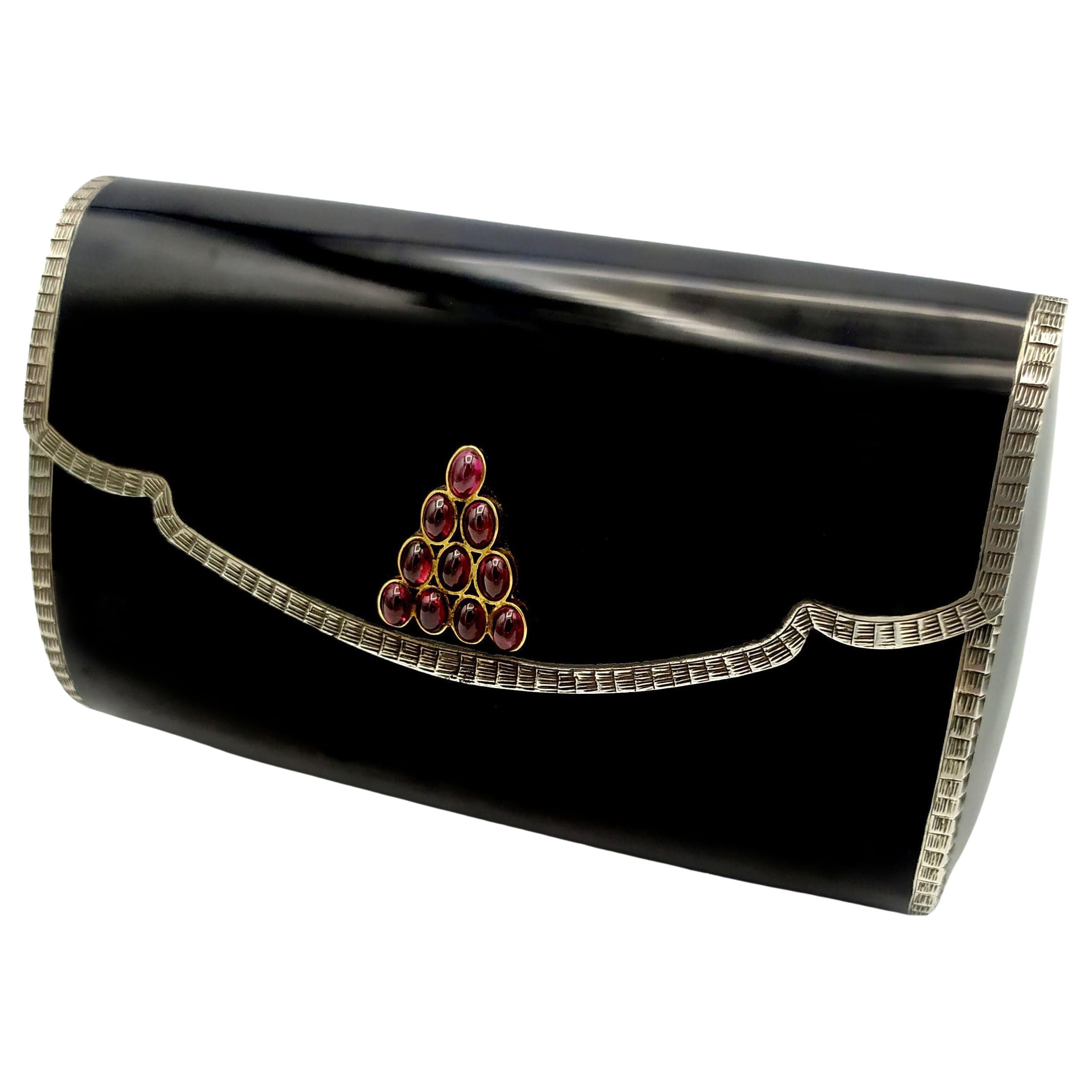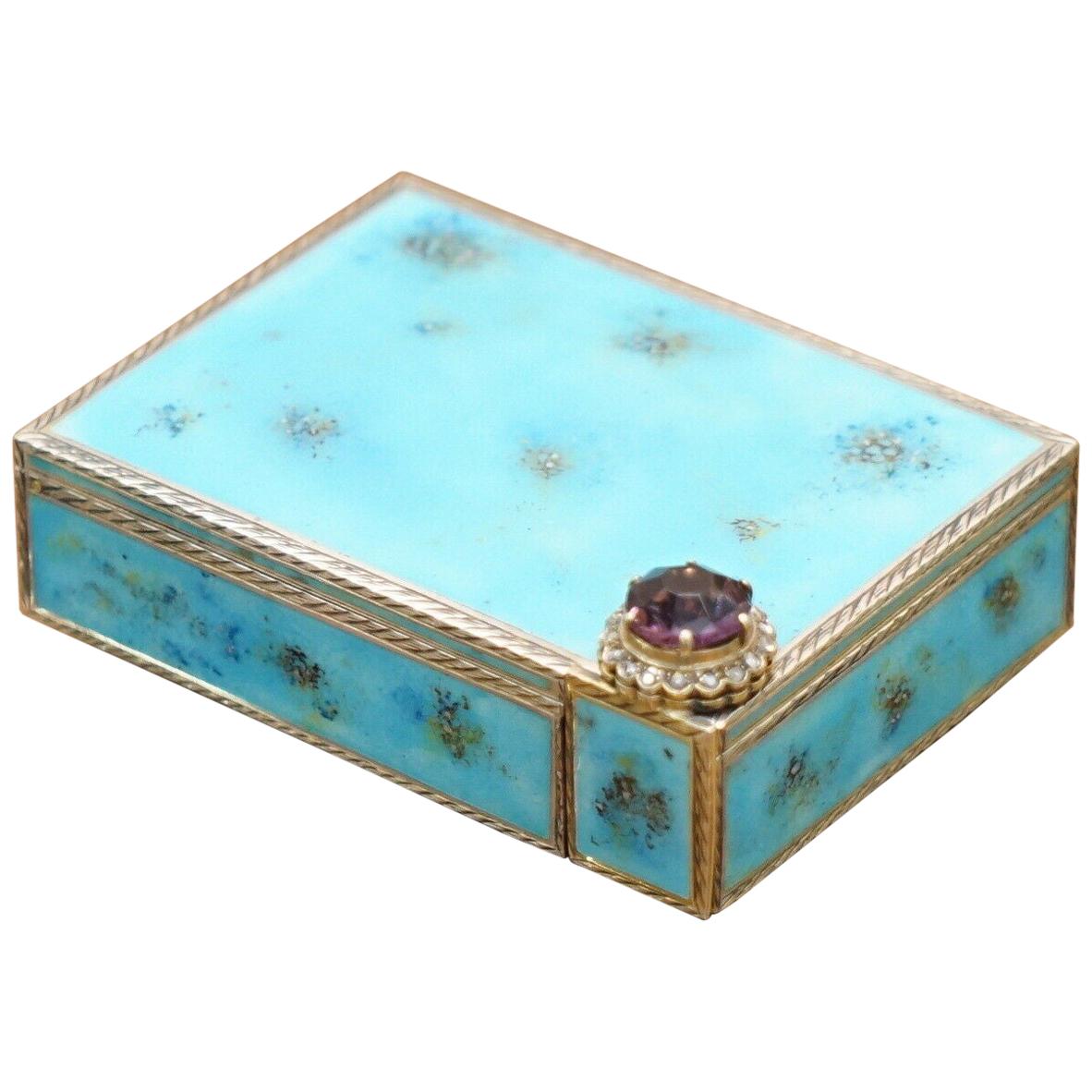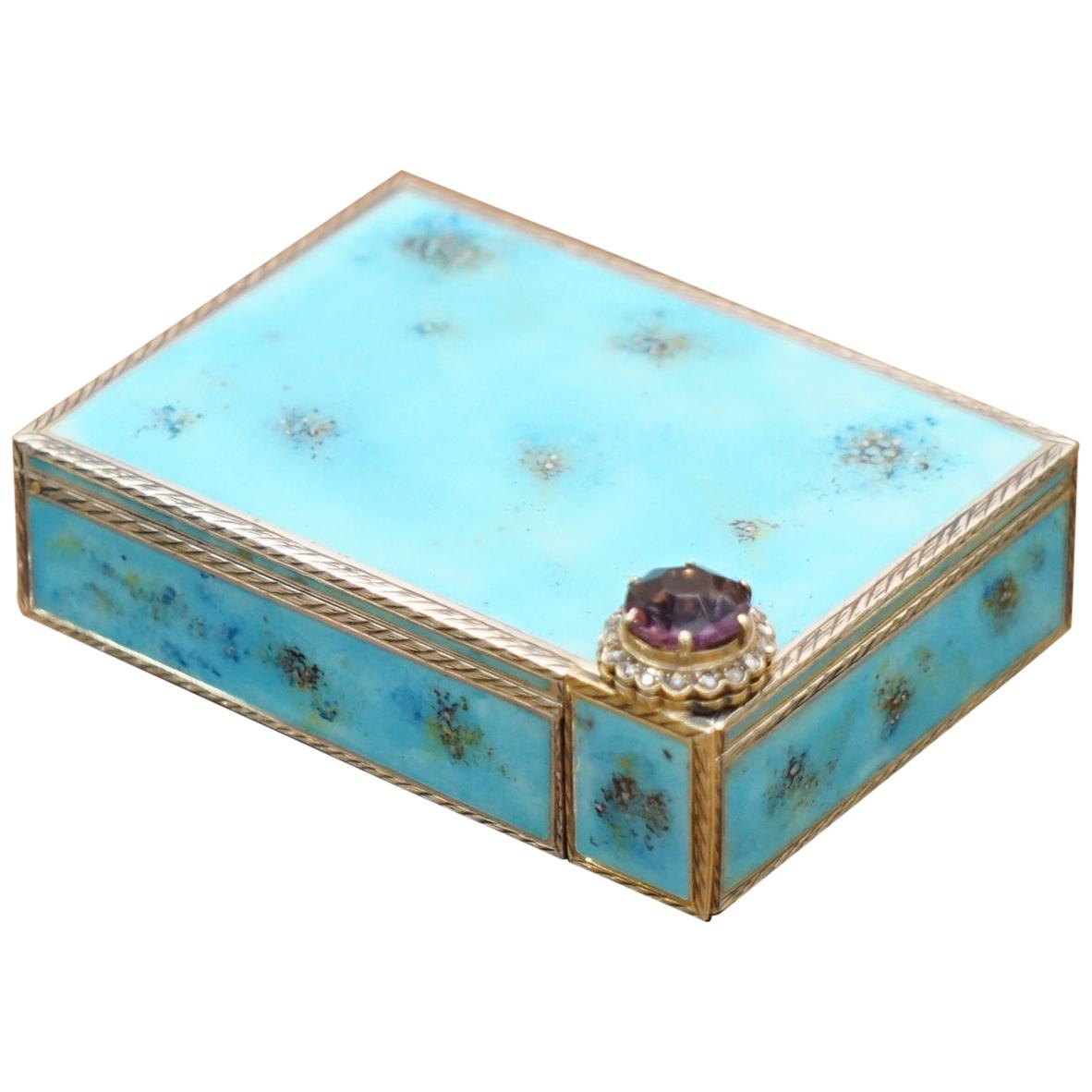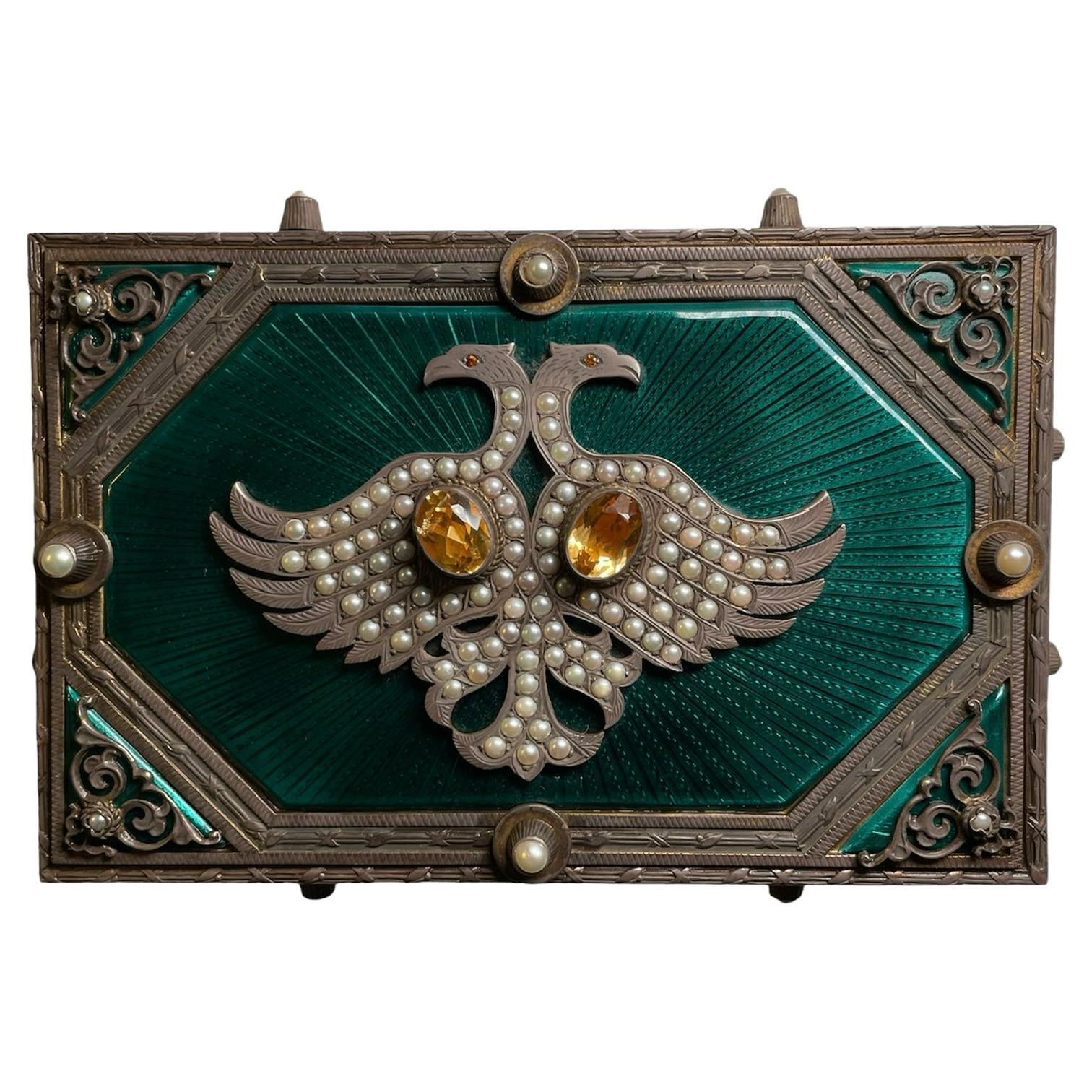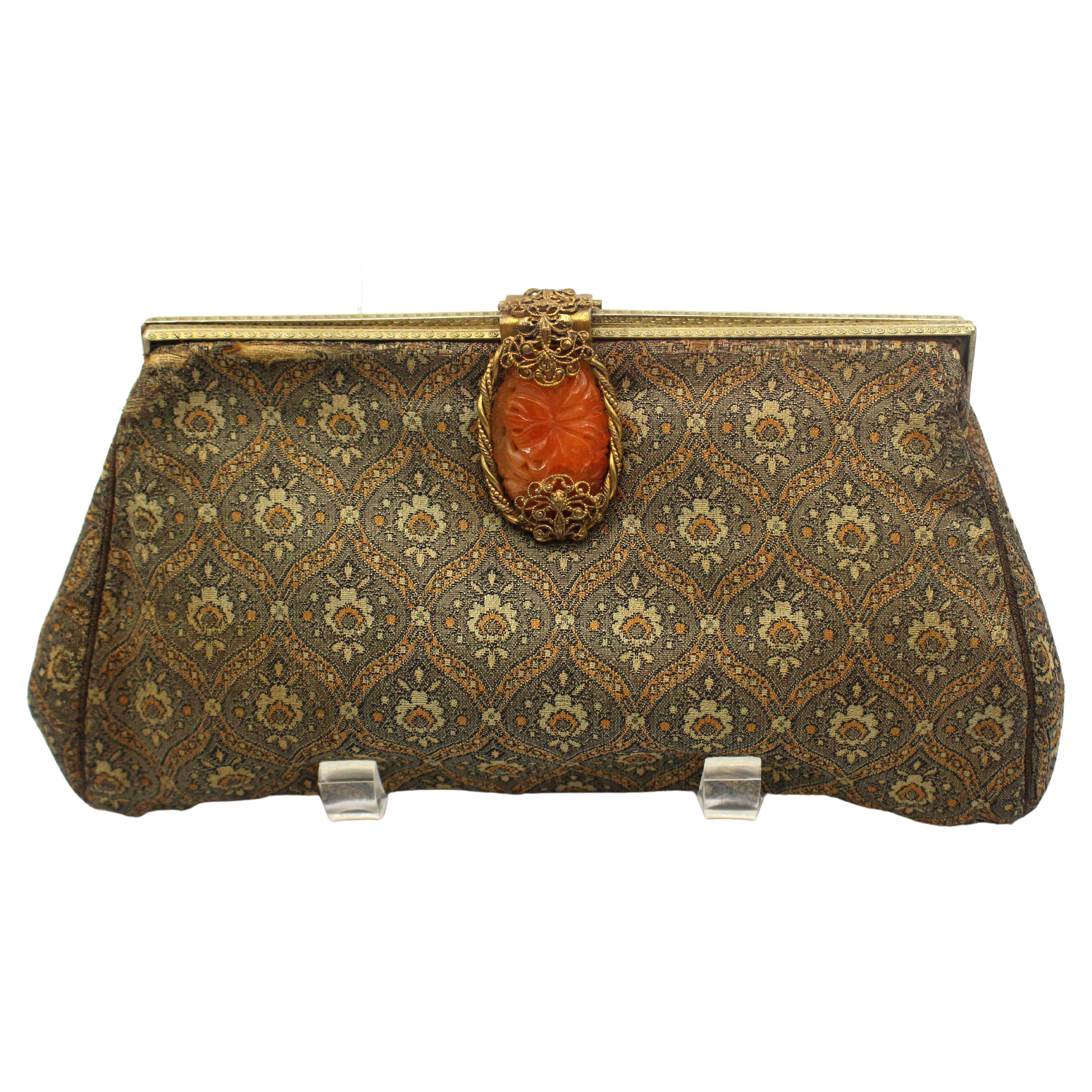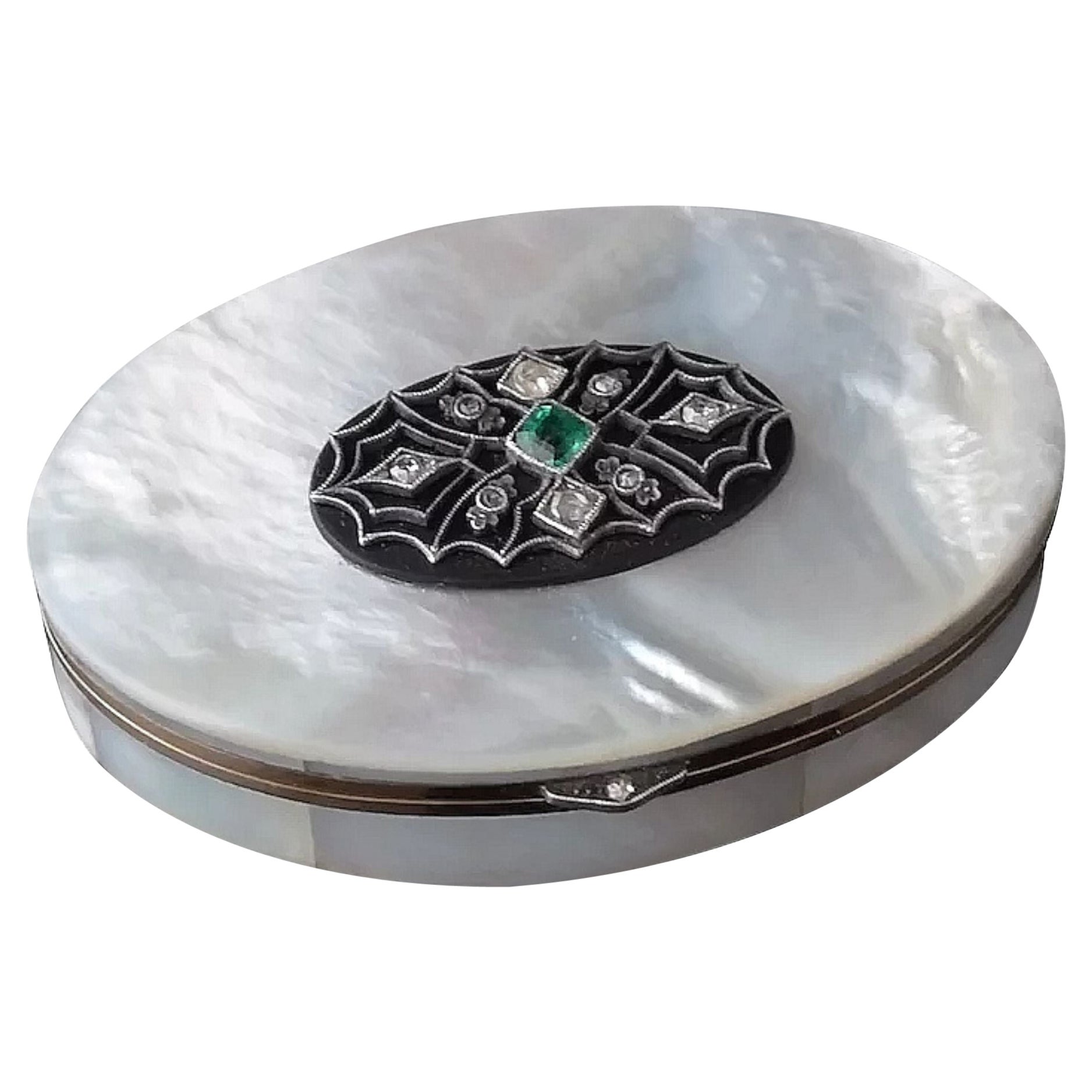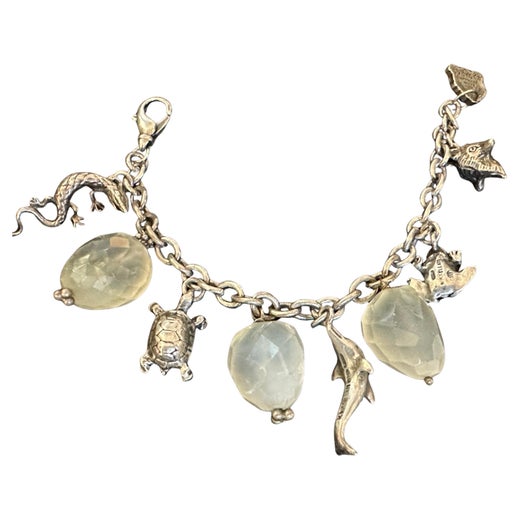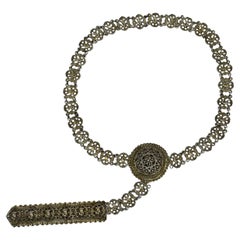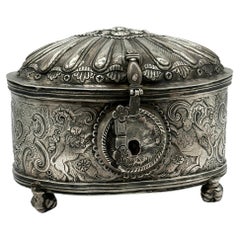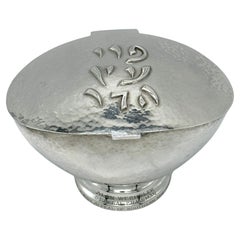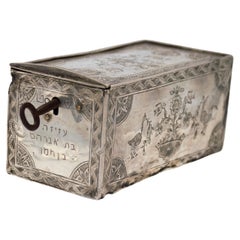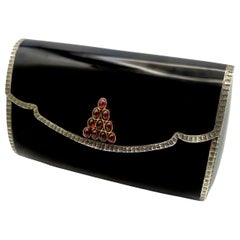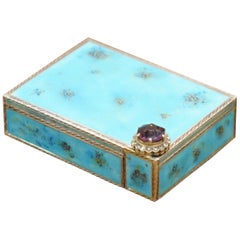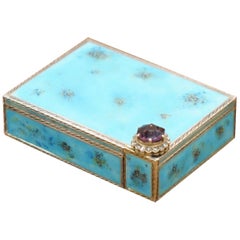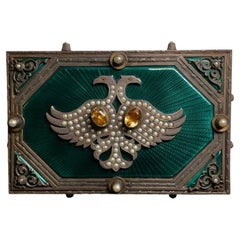Silver Gold and Gem-Set Clutch with Black Silk Carrying Case, Mario Buccellati
About the Item
- Creator:Mario Buccellati (Artist)
- Dimensions:Height: 1.6 in (4.07 cm)Width: 6.5 in (16.51 cm)Depth: 3.6 in (9.15 cm)
- Materials and Techniques:
- Place of Origin:
- Period:
- Date of Manufacture:1960s
- Condition:Wear consistent with age and use.
- Seller Location:Tel Aviv - Jaffa, IL
- Reference Number:1stDibs: LU8130235271052
Mario Buccellati
A love of tradition set Mario Buccellati and his fine jewelry house apart in the competitive Italian market and remains a point of pride for the family.
In 1919, Mario launched Buccellati with the opening of his first shop in Milan and quickly built a reputation for his richly embellished traforato, or finely pierced goldwork. The Ancona, Italy–born jeweler’s workmanship was in a class of its own. His rings, earrings, bracelets and other accessories were exquisite, yet the gemstones themselves were never too flashy, elevated instead by the designs’ intricate metalsmithing.
Today the Buccellati family is still closely tied to the business even as it is now owned by Richemont, a luxury conglomerate that also counts Cartier and Van Cleef & Arpels among its subsidiaries.
A young Mario Buccellati apprenticed with famed goldsmith Beltrami e Besnati in the early 1900s, although many of the goldsmithing techniques synonymous with Buccellati go as far back as the Italian Renaissance. The family lineage is also said to include 18th-century jeweler Contardo Buccellati.
Owing to the founder’s advanced metalworking skills, the brand is known for designs that feature metal with the delicacy of lace and draw on the wonders of the natural world. The house’s work is typified by intricate gemstone settings that emphasize their natural color and dense engraving techniques that transform the texture of gold.
One of the time-honored engraving techniques that has come to characterize Buccellati’s work — techniques that require apprenticeships and training in the fine jeweler’s workshops — is called rigato. It involves the engraving of a precious metal with a series of parallel lines to achieve a fabric-like effect.
Rigato is on luminous display in the house’s Macri collection of earrings, cuff bracelets and other accessories. A painstaking attention to detail is pronounced in the celebrated Macri, Bartolomeo and Unica collections — witness the striking honeycomb motif, a house signature, that characterizes the Unica collection’s Caterina bracelet, for example.
The Macri collection was the work of Mario’s son, Gianmaria Buccellati, an award-winning jeweler and internationally renowned silversmith who worked to bring the brand to the global stage by overseeing the opening of boutiques in Tokyo, Paris, California and elsewhere.
In 1951, Mario opened his first store in New York City; today the company operates boutiques worldwide. In 2019, the company celebrated its centennial with a new flagship in Paris and the Vintage collection, which features some of its most enduring designs.
On 1stDibs, find a collection of authentic Mario Buccellati jewelry today.
- ShippingRetrieving quote...Shipping from: Tel Aviv - Jaffa, Israel
- Return Policy
More From This Seller
View AllAntique Early 18th Century German Sterling Silver
Gold Plate, Silver
Antique Late 18th Century Snuff Boxes and Tobacco Boxes
Silver
Vintage 1960s Decorative Boxes
Silver
Antique Mid-19th Century Algerian Tribal Art
Silver
Antique 17th Century German Baroque Sterling Silver
Silver
Antique Late 19th Century French Neoclassical Sterling Silver
Gold Plate, Silver
You May Also Like
Vintage 1970s Italian Art Deco Jewelry Boxes
Sterling Silver, Enamel, Gold
Antique Early 1900s French Victorian Vanity Items
Sterling Silver, Enamel
Antique Early 1900s European Victorian Sterling Silver
Sterling Silver, Enamel
20th Century Unknown Belle Époque Decorative Boxes
Sterling Silver
Vintage 1930s European Ceramics
Silk, Brocade
Early 20th Century French Art Deco Boxes and Cases
Diamond, Emerald, Yellow Gold
